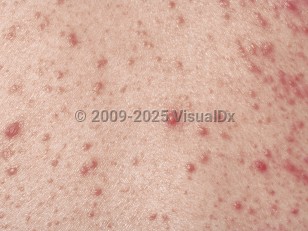NEH is most frequently associated with chemotherapy, particularly cytarabine, but also with bleomycin, cyclophosphamide, anthracyclines, decitabine, BRAF inhibitors (eg, dabrafenib and vemurafenib), cetuximab, dasatinib, 5-fluorouracil, and methotrexate, among other agents. It typically occurs 7-14 days after initiation of the drug. However, the range of onset is broad, occurring anywhere from 2 days to 2 years after chemotherapy initiation. Patients may experience recurrences with subsequent courses of chemotherapy.
Other associated causes:
- Other medications: acetaminophen, carbamazepine, minocycline, adalimumab, and granulocyte colony-stimulating factor (G-CSF)
- Paraneoplastic phenomenon: reported with myeloproliferative (eg, acute myeloid leukemia) and lymphoproliferative (eg, Hodgkin lymphoma) malignancies as well as solid organ malignancies such as osteosarcoma, testicular carcinoma, metastatic breast cancer, and Wilms tumor) without preceding chemotherapy
- HIV
- Bacterial infections (Serratia, Staphylococcus, Enterobacter, and Nocardia).
- Behçet disease
- Rarely, heat damage from high environmental temperatures (in the pediatric population)
- Idiopathic (otherwise healthy individuals)



